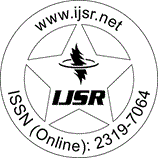Downloads: 6
India | Biotechnology | Volume 10 Issue 11, November 2021 | Pages: 619 - 621
Review on Bryophyllum Pinnatum
Abstract: Bryophyllumpinnatum is perennial herb growing widely and used in folkloric medicine in China, India &Australia. The local people of southern India and Bengal use this plant for the treatment of kidneystones diseases as a source of Pashanabheda, which is usually referred to as parnabeeja, a member of Crassulaceae. Mostly, this plant is one meter in height, with opposite glabrous leaves (with 3 - 5 deeply crenulated, fleshy leaflet). The leaves are frequently used for an array of human disorder including hypetension, dysentery, vomiting. Acute inflammation. The leaves are also used for ear disease. Bryophyllumpinnatum springs from greek word Bryo means to sprout and phyllon means leaf. The physicochemical study shows presence of alkaloid, flavonoid, lipids, phenols, glycoside, steroids, bufadienolide and organic acid are reported. It is widely used in treatment of hemostatic and wound healing. [11]The previous pharmacological studies showed that it exerted many pharmacological effects including anticancer, antibacterial, anthelmintic, antiprotozoal, neurologica (sedative and anticonvulsant), anti - inflammatory, analgesis, diuresis, anti - peptic ulcer and other pharmacological effects. The present review is designed to highlight the chemical constituents and pharmacological effects of Bryophyllumpinnatum.
Keywords: Bryophyllumpinnatum, secondary metabolites, pharmacological studies
How to Cite?: Abhishek C. Gavali, Sarika T. Loni, Unnati S. Tipe, "Review on Bryophyllum Pinnatum", Volume 10 Issue 11, November 2021, International Journal of Science and Research (IJSR), Pages: 619-621, https://www.ijsr.net/getabstract.php?paperid=SR211111170705, DOI: https://dx.doi.org/10.21275/SR211111170705
